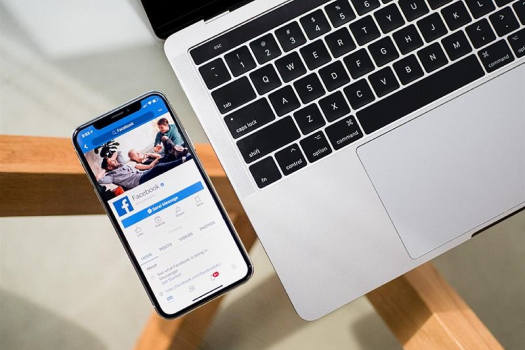When it comes to running successful Google Display campaigns, choosing the right Google Display ad sizes is crucial. With Google Display ads reaching over 90% of internet users worldwide across a vast network of 2 million websites and apps, the potential for your business is immense. To make the most of this opportunity, it's important to understand the top-performing and most common Google Display ad sizes, ensuring your ads meet the specifications set by Google.
Google Display ads specifications, also known as Google Display ad specs, play a pivotal role in optimizing your campaign's performance. By adhering to these specifications, you can ensure that your ads are displayed correctly and effectively across the Google Display Network. In this article, we will help break down all that you need to know about Google display advertising specs.
Does Size Matter?
As PPC marketers, we naturally prioritize key performance indicator (KPI) metrics when creating ads, such as design, messaging, and calls-to-action. However, when it comes to display ads, size does matter, and it plays a crucial role in determining how users perceive and engage with your ads on the internet.
The size of your banner ad significantly impacts its visibility and reach. It determines where and how users encounter your ad, ultimately influencing impressions, clicks, and conversions. Publisher websites control the availability and dimensions of ad slots, and they are knowledgeable about popular and engaging ad spaces that generate revenue.
By understanding the preferred Google ads image sizes on various publisher websites, you can avoid wasting resources on creating ads for less common or low-performing ad spaces. This knowledge allows you to focus on maximizing your reach and obtaining viewable impressions where they matter most.
While image size for Google display ads may have limitations, you can also upload HTML banner ads, which offer more flexibility in size without sacrificing resolution or pixelation issues commonly found in image formats.
By familiarizing yourself with Google Display specifications, you can create ads that meet the required image sizes and requirements. This understanding empowers you to craft impactful ads that resonate with your tech-savvy audience, ensuring optimal performance within the Google Ads ecosystem.
Understanding Google Search Ads Specifications
When it comes to running successful ad campaigns, it's crucial to understand the Google search ads specs as well as Google display specs. These specifications ensure that your ads meet the necessary guidelines and display optimally across Google advertising platforms. So, let’s dive deeper into this.
Google Search Ads Specifications: When creating search ads, it's important to adhere to the following Google search ads specs:
Ad Format: Google search ads typically contain a headline, display URL, and description.
Character Limits: The headline allows for up to 30 characters, while the description can have up to 90 characters. The display URL can include up to 15 characters.
Image Sizes: Unlike display ads, Google search ads do not support images. They primarily rely on compelling text-based content to capture users' attention.
Uploaded Display Ads Specifications For Google display ads that incorporate images, it's essential to consider the following image sizes and requirements:
Google Ads Image Requirements: Google Ads supports image files in three formats: JPG, PNG, and GIF.
File Size Limit: The file size for display banner ads should not exceed 150KB, regardless of the ad's dimensions. This restriction ensures optimal loading times and user experience.
Image Sizes: While specific image sizes may vary depending on the ad format, adhering to the recommended sizes for images in Google ads is vital. These sizes include the popular ones, such as the medium rectangle (300×250), large rectangle (336×280), leaderboard (728×90), half page (300×600), and large mobile (320×100).
Top Performing Google Ads Sizes
Google has conducted extensive research and identified the best-performing Google ad specs across different devices. Let's explore them:
1. Medium Rectangle: 300×250
The medium rectangle ad size is highly effective in capturing users' attention and delivering your message effectively. With its slightly smaller counterpart, the large rectangle (336×280), the medium rectangle offers sufficient space to showcase your content. This popular ad format allows for optimal content placement and is considered one of the most effective ad sizes to run on the Google Display Network.
2. Large Rectangle: 336×280
The large rectangle ad size provides advertisers with ample ad inventory, making it an ideal choice for display ads. It performs exceptionally well when placed within text content or at the end of articles. With its generous size, it can accommodate visually engaging elements and attract users' attention effectively.
3. Leaderboard: 728×90
The leaderboard ad size typically loads at the top of a webpage, positioned above the content. This prime location, known as "above the fold," increases the visibility and click-through rate of the ad. The leaderboard's dimensions of 728×90 make it a prominent ad size that delivers excellent results. It is often used for displaying brand messaging or multiple products, capturing users' attention from the moment they land on the page.
4. Half Page: 300×600
The half-page ad, also known as the large skyscraper, offers an expansive and impactful ad space. With its dimensions of 300×600, it takes up a significant portion of the page, making it highly visible and attention-grabbing. Google reports that the half-page banner is one of the fastest-growing ad sizes in terms of impressions and ad spaces. Leveraging this ad size can significantly enhance the visibility and impact of your campaigns.
5. Large Mobile: 320×100
The large mobile ad size, with dimensions of 320×100, serves as an alternative to the standard mobile banner (320×50). This ad size is particularly preferred for mobile devices as it provides additional height, allowing for more creative freedom and engaging content. By utilizing the larger mobile banner, you can effectively capture users' attention and deliver your message in a visually appealing manner.
What is Google Ad Exchange?
Google Ad Exchange, commonly known as Google AdX, has its roots in DoubleClick Ad Exchange, which was initially established as an ad server in 1996. Google acquired DoubleClick in 2008, integrating it into its suite of advertising solutions.
AdX functions as a marketplace where publishers can sell their ad inventory to advertisers and agencies through real-time bidding (RTB) technology. The platform operates on an open auction model, allowing advertisers to bid in real-time for ad space, resulting in efficient allocation of display ads across the web.
By leveraging Ad Exchange, publishers can optimize their revenue potential by accessing a larger pool of advertisers while maintaining control over who can advertise on their websites. On the other hand, advertisers gain access to a wider range of websites and ad space, granting them greater control over ad placements.
It's important to note that AdX caters to both website owners and mobile app developers, distinguishing it from Google AdSense, which primarily serves website owners, and AdMob, which specializes in assisting mobile app developers with ad space monetization.
In Conclusion
Google Ads are a goldmine for success when leveraged with skill and knowledge. Every aspect of it adds to the likelihood of running a successful ad campaign. Hence, consider partnering with Saffron Edge to unlock the full potential of your Google Ads campaigns and achieve remarkable outcomes. As a leading digital marketing agency, we possess extensive expertise and a deep understanding of image specifications and creative optimization. Our team of professionals can help you create compelling ad visuals that resonate with your target audience and deliver exceptional performance. Connect with us today!
The ultimate marketing toolkit
Related Blogs
We explore and publish the latest & most underrated content before it becomes a trend.

Subscribe to Saffron Edge Newsletter!

The ultimate marketing toolkit










